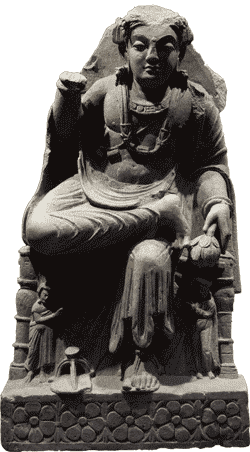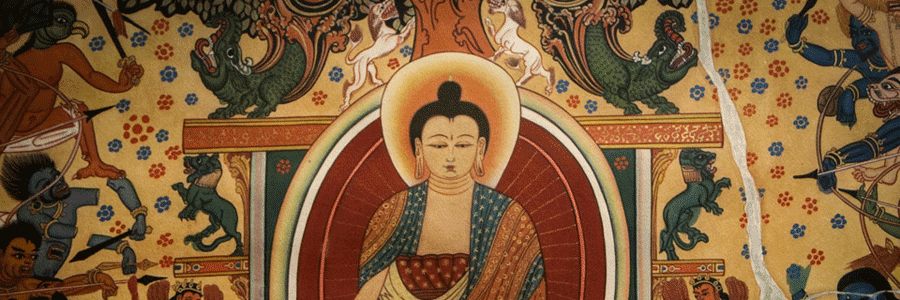In order to realize his possibilities, man must have a very strong desire for liberation and be willing to sacrifice everything, to risk everything, for the sake of this liberation. ~ George Gurdjieff
The Palace of Sleep
 Gurdjieff likened awakening to escaping from prison. The prison is man’s own sleep, and the primary force that keeps him locked up is that he is oblivious of his own captivity. As long as man enjoys the chains and fetters that bind him, as long as he holds in high regard the very traits that prevent him from awakening, he can never escape.
Gurdjieff likened awakening to escaping from prison. The prison is man’s own sleep, and the primary force that keeps him locked up is that he is oblivious of his own captivity. As long as man enjoys the chains and fetters that bind him, as long as he holds in high regard the very traits that prevent him from awakening, he can never escape.
To vivify man’s imprisonment in sleep, his ignorance of the chains and the determination needed to break those chains, Buddhism coined the story of the life of Prince Siddhartha.
Birth and Childhood of Siddhartha
Siddhartha was born to Queen Mahamaya and King Suddhodana. His very conception was shrouded in omens: his mother the queen dreamt of a white elephant entering her womb. She awoke and shared her dream with the king, who summoned his counselors to interpret the unusual apparition.
None of the king’s men could make sense of Mahamaya’s auspicious vision save one, who explained that the queen had conceived and would bear a most special son. This prince would either become a great monarch or an enlightened Buddha.
Gurdjieff’s Prison in Buddhist Myth
In order to bring the former prediction to pass and avert the latter, King Suddhodana confines his son to the luxuries of a palatial life. If Siddhartha will never see the realities of suffering, poverty, sickness and death, he might never experience the urge for enlightenment.
 But the devas (the Buddhist gods) sow in young Siddhartha the seed of curiosity. As he matures, so does his thirst to know the outside world. At the age of twenty-nine, he can no longer resist his need to explore what lies beyond the palace walls and asks his father permission to venture out into the city.
But the devas (the Buddhist gods) sow in young Siddhartha the seed of curiosity. As he matures, so does his thirst to know the outside world. At the age of twenty-nine, he can no longer resist his need to explore what lies beyond the palace walls and asks his father permission to venture out into the city.
Stunned at the failure of his original plan, the king schemes another: he will clean the streets of his kingdom from sick and old people, and will present Siddhartha with an artificially manicured city.
 At first, Siddhartha sees exactly what his father intends him to. But the devas weave a further flaw into the king’s plan: they arrange a broken old cripple to cross paths with the prince. For the first time in three decades, Siddhartha witnesses old age and is horror-struck by the reality of human frailty. Siddhartha subsequently makes three more such excursions, and in each, albeit the king’s efforts to bleach the streets, the devas arrange that Siddhartha sees life’s bitter truths. On the second excursion he sees a helpless sick man. On the third he sees a dead man being carried on a bier. But on the fourth he sees a calm and self-controlled monk.
At first, Siddhartha sees exactly what his father intends him to. But the devas weave a further flaw into the king’s plan: they arrange a broken old cripple to cross paths with the prince. For the first time in three decades, Siddhartha witnesses old age and is horror-struck by the reality of human frailty. Siddhartha subsequently makes three more such excursions, and in each, albeit the king’s efforts to bleach the streets, the devas arrange that Siddhartha sees life’s bitter truths. On the second excursion he sees a helpless sick man. On the third he sees a dead man being carried on a bier. But on the fourth he sees a calm and self-controlled monk.
Siddhartha is told that a monk is a man who has renounced this world for the sake of the next, having perceived the vanity of worldly pursuits in the face of death.
The young prince returns to his palace disillusioned. He realizes that he has been deceived. He perceives that his luxurious life will inevitably end in death. For the first time, he sees his palace for what it is, an opulent prison. For the first time, he formulates the desire to depart.
Buddhism and the Fourth Way
Buddhism conveys in myth the same lesson Gurdjieff imparted in Fourth Way terminology: man is born imprisoned in sleep. This prison is luxurious, in that its walls are made of self-suggestion and self-flattery. The first step towards liberation can only be a genuine realization that one is chained.
In this spirit, I invite my writers to dedicate this month’s posts to their first realizations of their internal imprisonment.
It is only when you realize life is taking you nowhere that it begins to have meaning. ~ Peter Ouspensky
